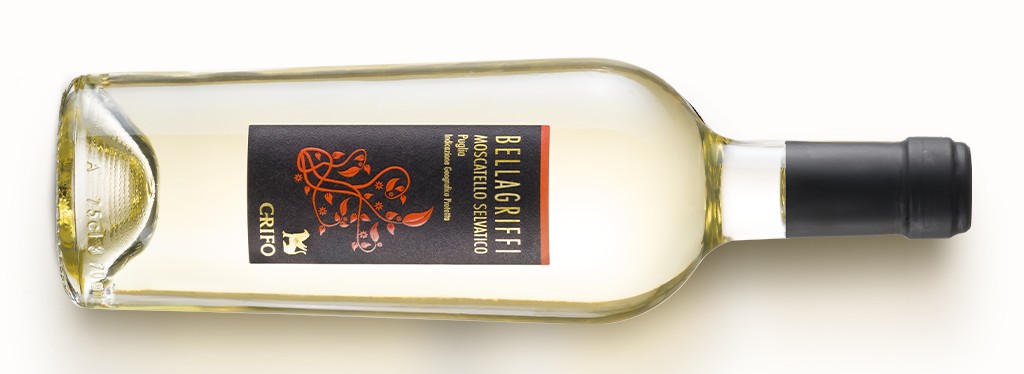
Among the best white wines of Puglia there is undoubtedly Moscatello Selvatico. A wine that Cantina di Ruvo di Puglia produces under the label “Bellagriffi” Moscatello Selvatico Puglia IGP CRIFO.
It is made from 100% Moscatello Selvatico grapes, grown in the countryside of Ruvo di Puglia at the Contrada Bellagriffi, from which the label takes its name. The harvest takes place between late August and early September. We are talking about a perfect synthesis between the cultivation of an autochthonous Apulian grape variety with traditional methods and modern techniques of winemaking. This is why it is present in the selections that the Apulian section of the Italian Sommelier Association prepares for classes dedicated to its members.
A confirmation, more than a success, for Cantina di Ruvo di Puglia, a historic Apulian Cooperative Winery founded in 1960, which can count on over 400 members engaged in more than 1000 hectares of vineyards.
Going back to the wine protagonist of this article, the AIS delegation of Murge had already planned the tasting in several associative meetings, as well as in the occasion of classes attended by its aspiring sommeliers. The added value of these occasions was the participation of the author of “Bellagiffi”, the winemaker of Cantina di Ruvo di Puglia, Massimo Tripaldi. He is the vice-President of Assoenologi Italy is a great expert of the territory and of the productive reality of which he is also Technical Manager.
The important Apulian vine of Moscatello Selvatico belongs to the great family of Moscati, of which it has the typical aromaticity.
It is cultivated between the Murge and the Bari Basin, the result of a thousand-year effort, in lands that today are among the richest in future, for the intrinsic values they preserve as well as for the natural gift they have received: no coincidence that the wine CRIFO produces in this area is, finally, looked with different and more careful eyes, both in Italy and in the world.
Production techniques
The grapes are taken immediately into the cellar and they undergo pressing and destemming, then cooled to 10° then undergo a short maceration in the press for 4/6 hours in order to extract the aromas of the skins. The flower must is collected for fermentation in stainless steel to 15°. The wine ages for 40 days on the lees before being bottled, and it remains in aging for another 2 months.
Organoleptic notes
Its intense straw yellow color and golden reflections anticipate the complex aromatic character of this wine. It boasts delicate rose tea and white peach, while citrus leaves the pace to subtle hints of anise and sage. The finish is pleasing, fresh and slightly balsamic, with hints of medicinal herbs and rosemary.
Food pairings
Risotto with wild herbs, cream of wild pea and saffron, fried sage, rosemary potatoes, monacelle snails according to the Apulian recipe.
Serving temperature: 10° C
Analytical data:
Alcohol content 12% vol
Residual sugar 5,20 g.l.
Total acidity 5,50 g.l.
